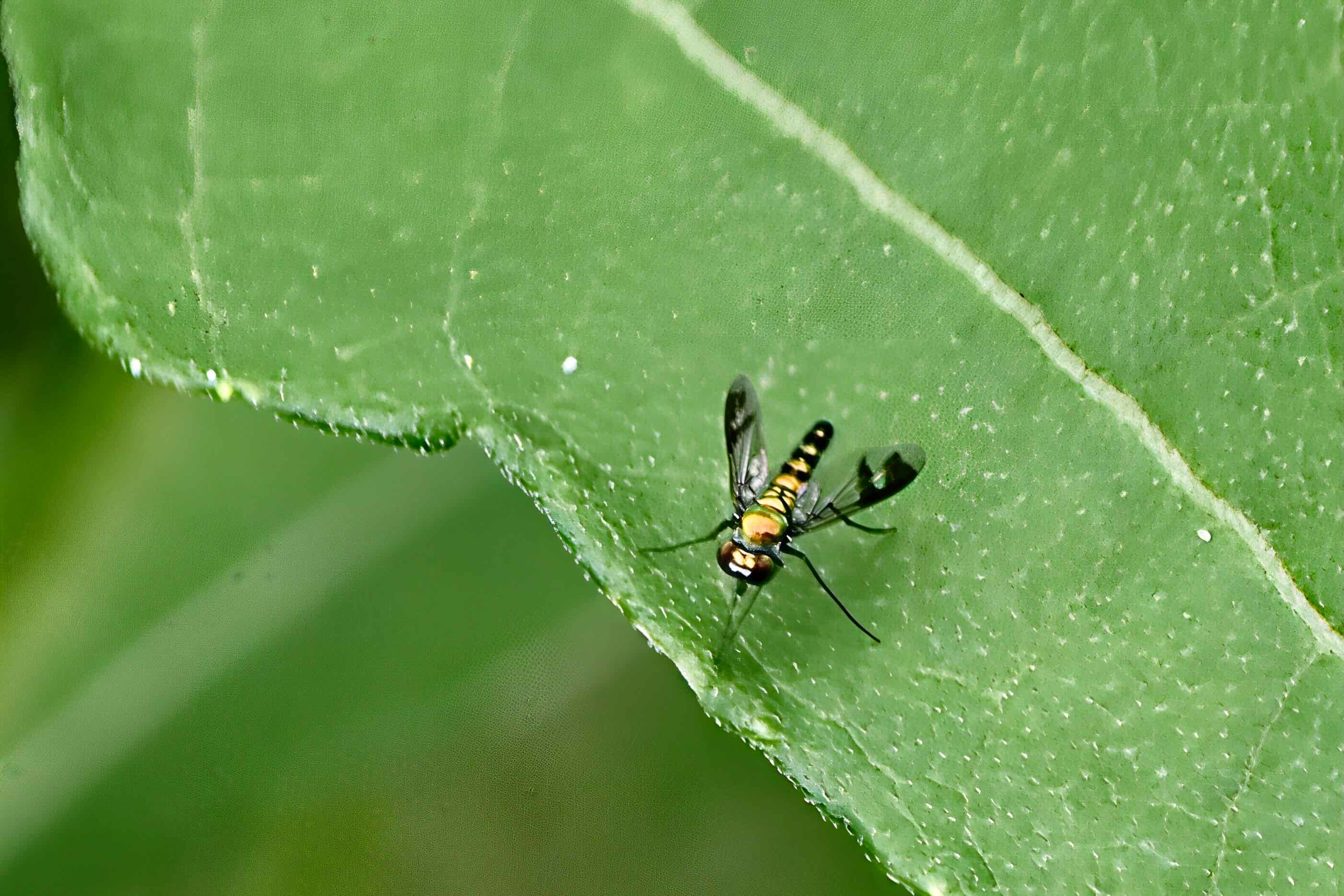
Condylostylus quadracolor, long-legged fly, photographed at The Arboretum at Constitution Park, Deerfield Beach, Broward County, in October 2024.
In the 1970s, the rock group America gave us A Horse with No Name. In 2025, we present a fly with no name. No common name, that is.
This member of the long-legged fly family does in fact have a scientific, or binomial name, Condylostylus quadracolor. But, per the Entomylogical Society of America, it has no accepted common name.
We’d propose Floyd or Zelda, or even Condy, inspired partly by the former Secretary of State Condolezza Rice, but we’re almost certain the society would give them a thumbs down. We’re sure Ms. Rice would be honored if it were to come about. Who wouldn’t be?
Thing is there are something like a million species of insects in existence, of which 7,400 are classified as long-legged flies. The number of bugs without a common name probably number in the tens of thousands if not the hundreds of thousands.
Our guy, Condylostylus quadracolor, is pretty much typical of long-legged flies. The genus name, Condylostylus, translates from Greek words meaning long-legged green flies. There are 35 member of the genus found in the United States and Canada.
All have several clear characteristics in common: they are small, about a quarter of an inch in length, have outsized long legs in proportion to their body size, of course; and have wings that are held out at an angle from the body when at rest rather than folded flat on the back like a house fly does.

A few are dull in color but most sport bright metallic hues, with greens the most common but also reds, blues and copper in the mix.
Beyond that, the devil, or species identification, is in the details. Note the smoky pattern on the wings of our guy in the photo above. It helps narrow the field but is not definitive to a particular species. Males and females are similar in looks, but there are differences that an expert’s eyes can pick up.
Click here for an identification guide to the genus Condylostylus.
We should note here that we have not relied on our own limited abilities to identify our guy in the photo as Condylostylus quadracolor. Rather, we’ve used the expertise of iNaturalist to make the call.
Condylostylus quadracolor and other long-legged flies are considered true flies, going through four stages from egg to larvae to pupae to adult. Unlike their housefly cousins, long-legged flies are beneficial, preying on pest insects like thrips and mites that damage crops and ornamentals. Not a lot is known about the development of these flies other than the larvae live in the ground and, like adults, are predators.
Condylostylus quadracolor is mostly found in the southern tier of the United States, from Florida west to Arizona. It’s also found in Ohio and Kentucky and in the Chesapeake Bay area.
Condylostylus quadracolor is a member of Dolichopodidae, the family of long-legged flies.
The Arboretum at Constitution Park
